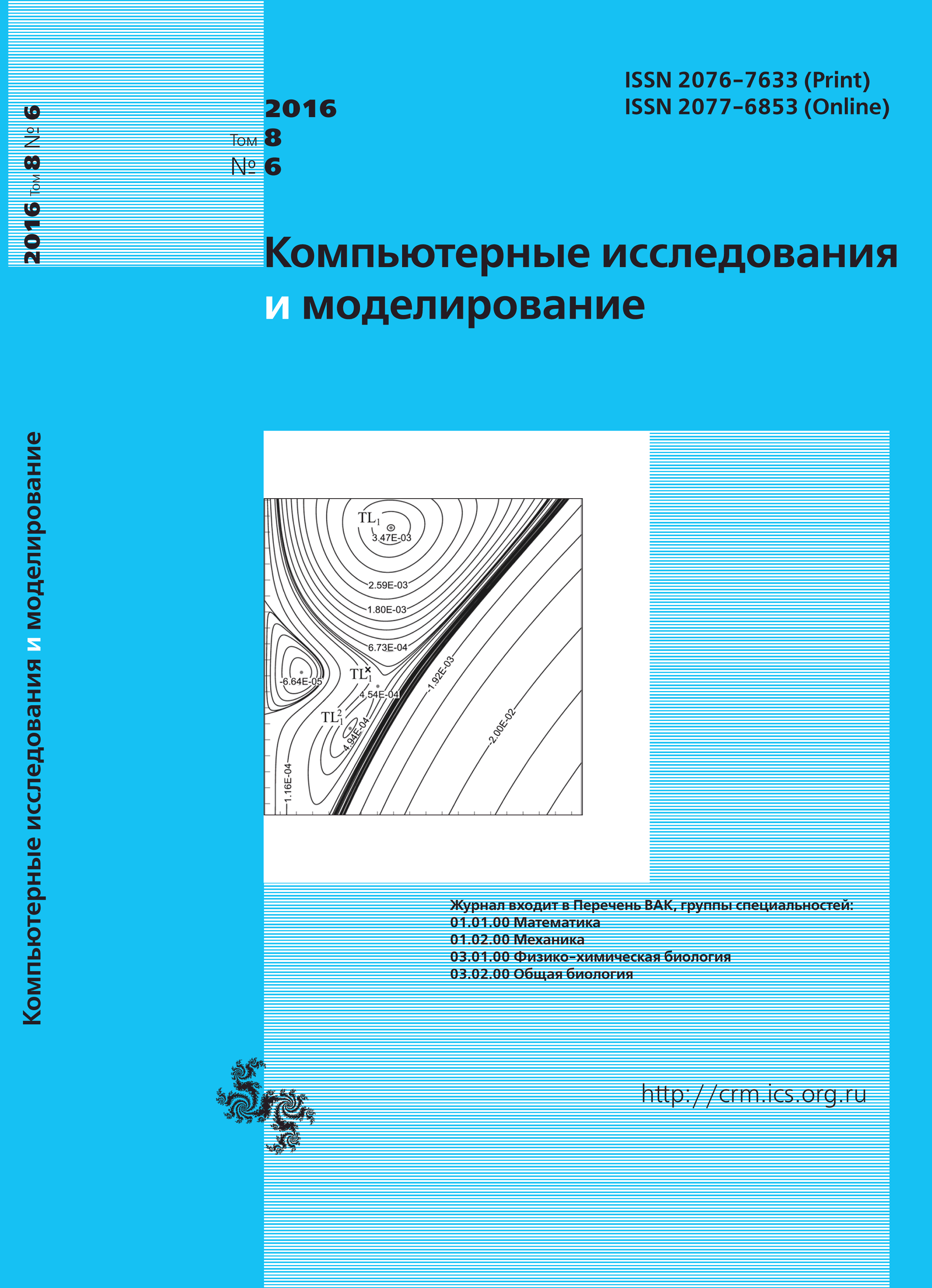All issues
- 2025 Vol. 17
- 2024 Vol. 16
- 2023 Vol. 15
- 2022 Vol. 14
- 2021 Vol. 13
- 2020 Vol. 12
- 2019 Vol. 11
- 2018 Vol. 10
- 2017 Vol. 9
- 2016 Vol. 8
- 2015 Vol. 7
- 2014 Vol. 6
- 2013 Vol. 5
- 2012 Vol. 4
- 2011 Vol. 3
- 2010 Vol. 2
- 2009 Vol. 1
Layered Bénard–Marangoni convection during heat transfer according to the Newton’s law of cooling
The paper considers mathematical modeling of layered Benard–Marangoni convection of a viscous incompressible fluid. The fluid moves in an infinitely extended layer. The Oberbeck–Boussinesq system describing layered Benard–Marangoni convection is overdetermined, since the vertical velocity is zero identically. We have a system of five equations to calculate two components of the velocity vector, temperature and pressure (three equations of impulse conservation, the incompressibility equation and the heat equation). A class of exact solutions is proposed for the solvability of the Oberbeck–Boussinesq system. The structure of the proposed solution is such that the incompressibility equation is satisfied identically. Thus, it is possible to eliminate the «extra» equation. The emphasis is on the study of heat exchange on the free layer boundary, which is considered rigid. In the description of thermocapillary convective motion, heat exchange is set according to the Newton’s law of cooling. The application of this heat distribution law leads to the third-kind initial-boundary value problem. It is shown that within the presented class of exact solutions to the Oberbeck–Boussinesq equations the overdetermined initial-boundary value problem is reduced to the Sturm–Liouville problem. Consequently, the hydrodynamic fields are expressed using trigonometric functions (the Fourier basis). A transcendental equation is obtained to determine the eigenvalues of the problem. This equation is solved numerically. The numerical analysis of the solutions of the system of evolutionary and gradient equations describing fluid flow is executed. Hydrodynamic fields are analyzed by a computational experiment. The existence of counterflows in the fluid layer is shown in the study of the boundary value problem. The existence of counterflows is equivalent to the presence of stagnation points in the fluid, and this testifies to the existence of a local extremum of the kinetic energy of the fluid. It has been established that each velocity component cannot have more than one zero value. Thus, the fluid flow is separated into two zones. The tangential stresses have different signs in these zones. Moreover, there is a fluid layer thickness at which the tangential stresses at the liquid layer equal to zero on the lower boundary. This physical effect is possible only for Newtonian fluids. The temperature and pressure fields have the same properties as velocities. All the nonstationary solutions approach the steady state in this case.
- , , . Marangoni effect on the thermal performance of glycerol/water mixture in microchannel. // Applied Thermal Engineering. — 2019. — V. 161. — P. 114142. DOI: 10.1016/j.applthermaleng.2019.114142
Indexed in Scopus
Full-text version of the journal is also available on the web site of the scientific electronic library eLIBRARY.RU
The journal is included in the Russian Science Citation Index
The journal is included in the RSCI
International Interdisciplinary Conference "Mathematics. Computing. Education"







